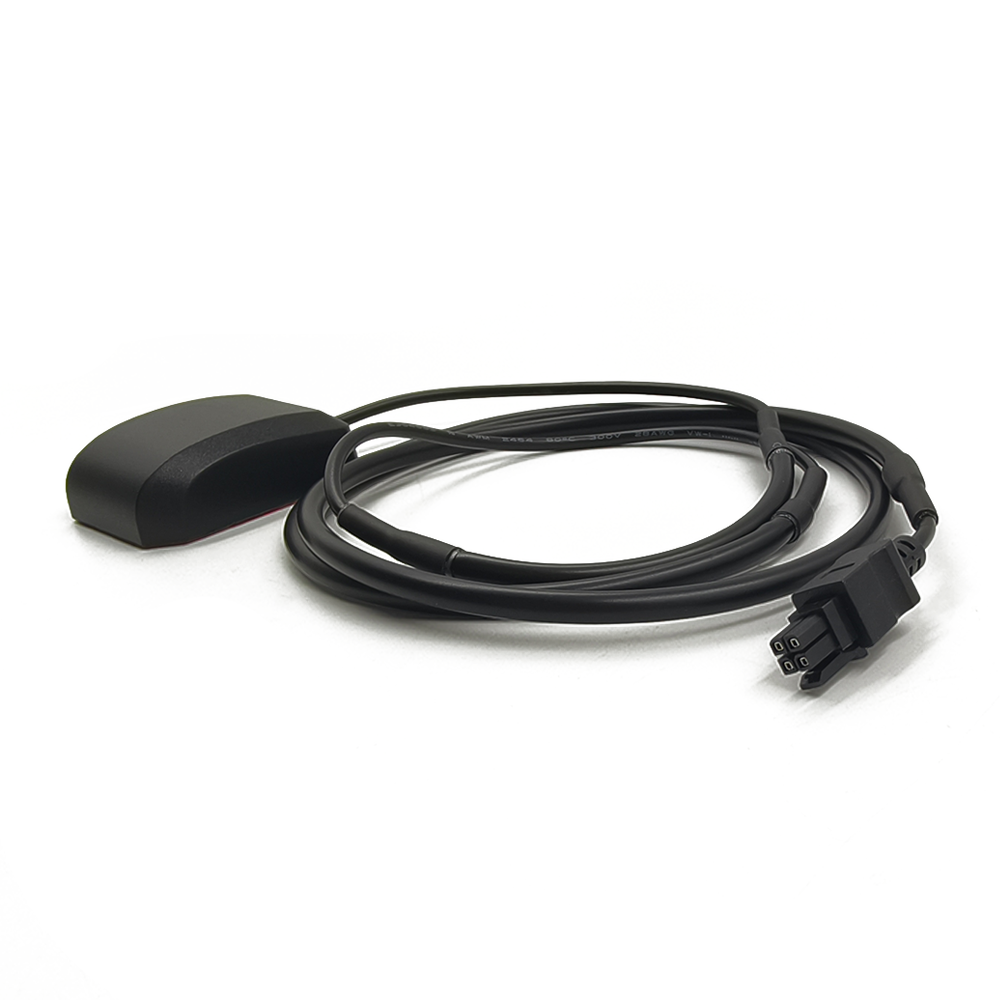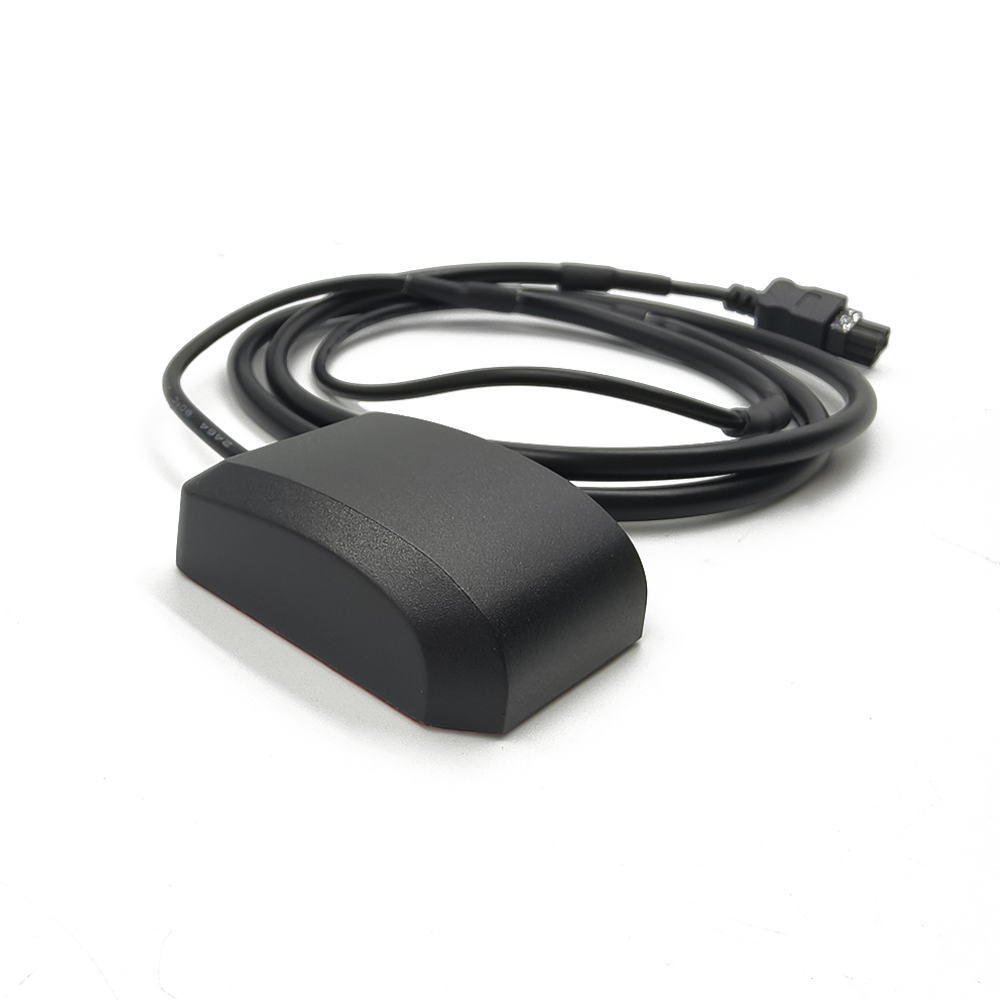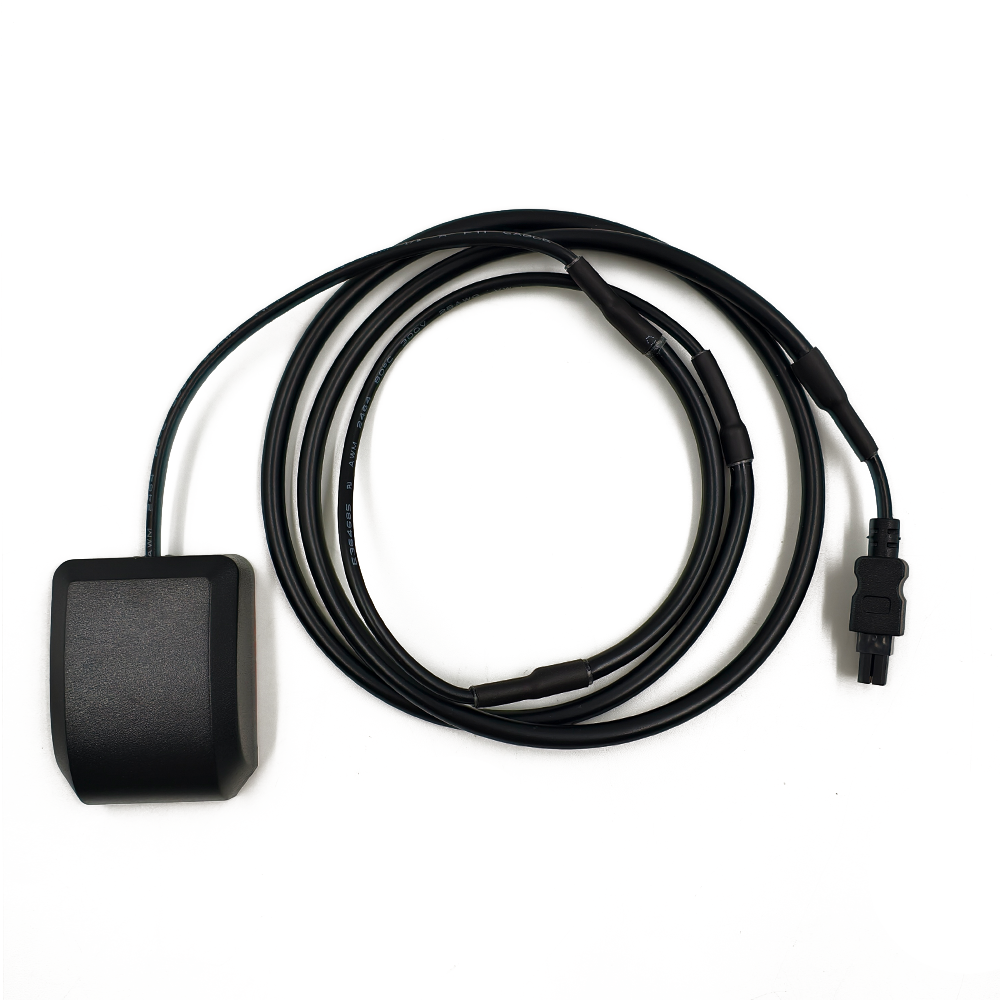Overview
GNSS, which encompasses multiple satellite constellations such as GPS (United States), GLONASS (Russia), Galileo (Europe), and BeiDou (China), forms the foundation for global positioning. Each constellation operates on specific frequency bands, and these frequencies carry unique characteristics and potential for error. Single - band antennas, limited to receiving signals from one frequency band, often struggle to provide accurate positioning in complex environments, facing issues such as multipath interference, ionospheric delays, and signal blockage. In contrast, multi - band GNSS antennas are designed to receive signals from multiple frequency bands simultaneously, allowing them to leverage the strengths of each band and mitigate errors more effectively.
The integration of RTK technology further elevates the positioning capabilities of these antennas. RTK operates by utilizing correction data from reference stations, which are strategically placed at known locations. These reference stations continuously monitor the GNSS signals and calculate the discrepancies between the actual satellite positions and the positions indicated by the received signals. The correction data, which accounts for errors caused by factors such as atmospheric conditions, satellite clock inaccuracies, and orbital deviations, is then transmitted to the drone's receiver in real - time. By incorporating this correction data into the positioning calculations, multi - band GNSS RTK external antennas can achieve centimeter - level or even millimeter - level accuracy, a significant leap compared to the basic GNSS positioning accuracy of several meters.
For drones, which frequently operate in challenging environments, the combination of multi - band capabilities and RTK technology offers unparalleled reliability and accuracy. In urban areas, drones may encounter signal obstructions from tall buildings, leading to multipath interference where signals reach the antenna via multiple reflected paths. Multi - band antennas can receive signals from different bands, some of which may be less affected by such interference, and use the RTK correction data to further refine the position calculation. In remote or mountainous regions, where ionospheric delays can distort the GNSS signals, the multi - band approach allows the antenna to cross - reference signals from different frequencies and apply more accurate corrections. This ability to adapt to various environmental conditions makes multi - band GNSS RTK external antennas essential for ensuring the safe and efficient operation of drones across a wide range of industries.
As drones continue to penetrate critical sectors such as construction, agriculture, and infrastructure inspection, the role of multi - band GNSS RTK external antennas in enabling precise positioning cannot be overstated. These antennas not only enhance the performance of drones but also open up new possibilities for innovation and efficiency in industries that rely on accurate location data.
Design and Construction
The design and construction of multi - band GNSS RTK external antennas for drones are intricate processes that demand a deep understanding of electromagnetic theory, material science, and mechanical engineering. Every aspect of the antenna's design is carefully optimized to ensure superior performance, durability, and compatibility with drones.
Antenna Element Design
The antenna element is the heart of the multi - band GNSS RTK external antenna, responsible for capturing the weak signals transmitted by GNSS satellites. Microstrip or patch antenna designs are commonly employed due to their compact size, low profile, and excellent efficiency in the GNSS frequency bands. These antennas consist of a metallic patch, typically made of copper or gold, placed on a dielectric substrate with a ground plane beneath.
For multi - band operation, the design of the metallic patch becomes highly complex. Engineers use advanced electromagnetic simulation software to optimize the shape, size, and configuration of the patch to resonate at multiple frequencies simultaneously. For example, to support the GPS L1 (1.575 GHz), L2 (1.227 GHz), and L5 (1.176 GHz) bands, as well as the corresponding bands of other constellations, the patch may feature intricate geometries such as fractal patterns or meandering lines. These designs increase the electrical length of the patch without significantly increasing its physical size, allowing it to operate efficiently across multiple frequency bands.
The choice of dielectric substrate is equally crucial. Substrates with stable electrical properties over a wide range of temperatures, humidity levels, and frequencies are preferred. Ceramic - based substrates are popular due to their high dielectric constant, which enables miniaturization, and their excellent thermal and mechanical stability. However, other materials like Rogers RT/duroid series may also be used, depending on the specific performance requirements and cost considerations of the antenna design.
Multiplexer and Filter Design
A multiplexer is a key component in multi - band GNSS RTK external antennas. Its role is to separate the signals received from different frequency bands and direct them to the appropriate signal processing channels. The multiplexer must have high isolation between different frequency channels to prevent interference between the signals from various bands. This is achieved through careful design of the multiplexer's circuitry, using techniques such as impedance matching and filtering.
Filters play a vital role in enhancing the performance of the antenna by rejecting unwanted frequencies and interference. Band - pass filters are used to allow only the frequencies within the desired GNSS bands to pass through while attenuating frequencies outside these bands. This helps to eliminate interference from other radio - frequency sources, such as wireless communication devices, Wi - Fi networks, and radio transmitters operating in the vicinity of the drone. Additionally, notch filters may be incorporated to specifically target and suppress certain frequencies that are known to cause interference, further improving the signal quality received by the antenna.
Signal Processing Unit Integration
The signals received by the antenna element and processed by the multiplexer and filters need to be amplified and digitized for further processing by the drone's GNSS receiver. A low - noise amplifier (LNA) is integrated into the antenna design to boost the weak GNSS signals while minimizing the addition of noise. The LNA is carefully selected for its high gain, low noise figure, and wide bandwidth to ensure effective amplification of signals across multiple frequency bands.
After amplification, the analog signals are converted into digital format using an analog - to - digital converter (ADC). The digitized signals are then ready to be transmitted to the drone's RTK receiver for subsequent processing, including signal acquisition, tracking, and position calculation. The integration of the signal processing unit within the antenna design is carefully planned to minimize signal losses and interference. The layout of components, routing of signal traces, and shielding of sensitive parts are all optimized to ensure that the signals reach the receiver in the best possible condition.
Enclosure and Mounting Design
The enclosure of a multi - band GNSS RTK external antenna for drones serves as a protective barrier against physical damage, electromagnetic interference, and environmental factors. Given the harsh operating conditions of drones, which may include high - speed flight, vibrations, extreme temperatures, and exposure to moisture and dust, the enclosure must be robust yet lightweight.
Materials such as carbon fiber composites or high - strength engineering plastics are commonly used for the enclosure. Carbon fiber composites offer excellent strength - to - weight ratio, making them ideal for reducing the overall weight of the antenna without compromising its durability. High - strength plastics, on the other hand, provide good impact resistance, UV resistance, and chemical resistance, protecting the internal components from environmental damage.
The mounting design of the antenna is also critical to ensure stable operation during drone flight. Antennas are typically mounted on the drone's frame using brackets or mounts that are designed to withstand vibrations and aerodynamic forces. The mounting position is carefully selected to optimize signal reception, taking into account factors such as the drone's shape, the location of other components, and potential signal obstructions.
Working Principles
The working principles of multi - band GNSS RTK external antennas for drones involve a series of coordinated processes that enable the antenna to capture, process, and transmit GNSS signals accurately, ultimately providing the drone with precise positioning information.
Signal Reception
The operation of the antenna commences with the antenna element capturing the weak radio - frequency signals transmitted by GNSS satellites. These signals, which carry crucial information about the satellite's position and time, travel through the Earth's atmosphere before reaching the antenna. The multi - band design of the antenna element allows it to efficiently couple with incoming signals from multiple frequency bands simultaneously.
When the frequencies of the incoming GNSS signals match the resonant frequencies of the corresponding metallic patches in the antenna element, a resonance effect occurs. This resonance significantly enhances the antenna's ability to absorb the energy of the signals, converting the electromagnetic energy of the GNSS signals into electrical signals. However, in real - world scenarios, these initial signals are often subject to various impairments, including ionospheric delays, tropospheric delays, multipath interference, and signal blockage.
Signal Separation and Filtering
The signals received by the antenna element, which are a mixture of signals from different frequency bands, are then directed to the multiplexer. The multiplexer acts as a signal sorter, separating the signals based on their frequency and routing each frequency band's signal to the appropriate processing channel. This separation is essential because each frequency band has distinct characteristics and error patterns.
After separation, the signals pass through band - pass filters. These filters are designed to allow only frequencies within the desired GNSS bands to pass through while attenuating frequencies outside these bands. This filtering process effectively rejects interference from other radio - frequency sources operating in the vicinity of the drone. Additionally, notch filters may be employed to specifically target and suppress certain frequencies known to cause interference, such as those from nearby wireless communication devices or radio transmitters. By filtering out unwanted frequencies, the antenna ensures that only clean and relevant GNSS signals are passed on for further processing.
Signal Amplification and Digitization
The filtered signals from each frequency band are then amplified by a low - noise amplifier (LNA). The LNA boosts the weak GNSS signals to a level suitable for further processing while keeping the added noise to an absolute minimum. This is of utmost importance because the signals received from satellites are extremely weak, and any additional noise could significantly degrade the accuracy of the positioning calculations performed by the drone's GNSS receiver.
Following amplification, the analog signals are converted into digital format using an analog - to - digital converter (ADC). The digitized signals are now in a form that can be easily processed by the GNSS receiver. The receiver utilizes these digital signals, along with correction data from reference stations in the case of RTK positioning, to calculate the precise position of the drone.
RTK Position Calculation
In the RTK positioning process, the drone's GNSS receiver receives the digitized signals from the antenna and also acquires correction data from reference stations. The correction data contains information about the errors in the satellite signals, such as ionospheric delays, tropospheric delays, and satellite clock inaccuracies. The receiver uses this correction data to adjust the raw GNSS measurements.
Using the principle of trilateration or multilateration, the receiver calculates the distance between the drone and each satellite based on the time it takes for the signals to travel from the satellite to the drone. By knowing the positions of the satellites and the distances to them, and applying the corrections, the receiver can determine the precise location of the drone on Earth's surface in real - time. This real - time calculation of the drone's position enables accurate navigation, task execution, and monitoring.
Advantages and Challenges
-
Advantages
One of the most significant advantages of multi - band GNSS RTK external antennas for drones is their exceptional positioning accuracy. The combination of multi - band signal reception and RTK correction data allows these antennas to achieve centimeter - level or even millimeter - level accuracy, which is essential for applications such as surveying, where precise mapping of terrain, buildings, and infrastructure is required. In construction projects, drones equipped with these antennas can accurately measure distances, heights, and volumes, enabling more efficient project planning and execution.
The multi - band and multi - constellation support of these antennas also enhance their reliability. By being able to receive signals from multiple GNSS constellations and frequency bands, the antenna can switch to alternative signals if one source is compromised due to interference, blockage, or satellite outages. This redundancy ensures that the drone can maintain continuous and accurate positioning, even in challenging environments where signal conditions may be unpredictable.
Another advantage is the improved adaptability to various environmental conditions. In urban areas, where multipath interference is a common issue due to signal reflections from buildings, multi - band GNSS RTK external antennas can use signals from different bands to mitigate the effects of interference. In remote or mountainous regions, where ionospheric delays can distort the GNSS signals, the multi - band approach allows for more accurate correction of these delays, ensuring reliable positioning.
Challenges
Despite their numerous advantages, multi - band GNSS RTK external antennas for drones face several significant challenges. One of the primary challenges is the high cost associated with their design and manufacturing. The complex design, which involves advanced electromagnetic engineering, high - quality materials, and sophisticated signal processing components, results in a higher production cost compared to single - band antennas. This cost can be a barrier for some drone users, especially those in budget - constrained industries or small - scale operations.
The external mounting of these antennas can also impact the aerodynamics of the drone. The added weight and size of the antenna, along with its mounting structure, can increase drag and reduce the drone's flight efficiency. This may lead to decreased flight times, reduced payload capacity, and increased energy consumption. Designers need to carefully balance the performance requirements of the antenna with the aerodynamic considerations of the drone to minimize these negative impacts.
Ensuring stable communication with reference stations is another major challenge. In remote areas or areas with poor communication infrastructure, establishing and maintaining a reliable link to receive RTK correction data can be difficult. Signal disruptions or delays in receiving the correction data can compromise the accuracy of the positioning system. Additionally, interference from other radio - frequency sources can also affect the communication between the antenna, the drone, and the reference stations, further complicating the operation of the RTK system.
Applications and Future Trends
-
Applications
Multi - band GNSS RTK external antennas have a wide range of applications in the drone industry. In surveying and mapping, these antennas enable drones to create highly detailed and accurate topographic maps, cadastral maps, and 3D models. Surveyors can use drones equipped with these antennas to quickly and efficiently survey large areas of land, reducing the time and cost associated with traditional surveying methods. The high - precision positioning provided by the antennas ensures that the survey data is reliable, which is essential for land development, construction, and urban planning projects.
In the agriculture sector, drones with multi - band GNSS RTK external antennas are used for precision farming applications. These drones can be used for crop monitoring, where they can detect variations in crop health, moisture levels, and nutrient deficiencies. By accurately mapping these variations, farmers can apply fertilizers, pesticides, and water more precisely, reducing waste and increasing crop yields. The antennas also enable drones to perform tasks such as variable - rate seeding, where the amount of seed sown can be adjusted based on the specific characteristics of the soil and terrain.
Delivery drones also benefit from the high - precision positioning capabilities of multi - band GNSS RTK external antennas. These antennas ensure that packages can be delivered to the correct locations with accuracy, even in complex urban environments or remote areas. The ability to accurately position the drone during delivery is crucial for ensuring the safety of the package and the people and property below.
Future Trends
Looking ahead, several future trends are expected to shape the development of multi - band GNSS RTK external antennas for drones. One trend is the further miniaturization of these antennas. As technology advances, new materials and manufacturing techniques, such as nanotechnology and 3D printing, will be explored to reduce the size and weight of the antennas without sacrificing performance. This miniaturization will enable the integration of these antennas into smaller and more lightweight drones, expanding the range of applications and improving the flight performance of the drones.
The integration of artificial intelligence (AI) and machine learning (ML) algorithms with multi - band GNSS RTK external antennas is an emerging trend. AI and ML can be used to optimize the performance of the antennas in real - time. These algorithms can analyze the received signals, detect changes in the signal environment, and adjust the antenna's operation parameters, such as gain, filtering, and interference mitigation, to adapt to different conditions. For example, AI can be used to predict and mitigate the effects of ionospheric disturbances or multipath interference by analyzing historical data and current signal patterns.
Advancements in communication technologies will also have a profound impact on these antennas. The development of 5G and other high - speed, low - latency communication networks will enable faster and more reliable transmission of RTK correction data. This will improve the overall performance of the positioning system, allowing for even more accurate positioning. Multi - band GNSS RTK external antennas will need to be designed to take full advantage of these new communication technologies, enabling seamless integration with the drone's communication systems and ground control stations.
There is also a growing trend towards the development of multi - functional antennas. Future multi - band GNSS RTK external antennas may integrate additional functions, such as wireless communication capabilities, sensor integration, or energy harvesting. For instance, an antenna could be designed to not only receive GNSS signals but also act as a Wi - Fi or 5G antenna for data transmission, reducing the number of antennas required on the drone and saving space. Sensor integration could enable the antenna to gather environmental data, such as temperature, humidity, or air pressure, which can be useful for various applications.
Conclusion
Multi - band GNSS RTK external antennas are indispensable components for drones that require high - precision positioning. Their ability to receive signals from multiple frequency bands and constellations, combined with the RTK technology, provides unparalleled accuracy and reliability in a wide range of applications. These antennas have significantly enhanced the capabilities of drones, enabling them to perform tasks with greater efficiency and precision across various industries.
However, challenges such as high cost, aerodynamic impact, and communication issues need to be addressed to further promote the widespread adoption of these antennas. As technology continues to evolve, future trends such as miniaturization, integration of AI and ML, advancements in communication technologies, and the development of multi - functional antennas offer great potential for improving the performance and capabilities of multi - band GNSS RTK external antennas. By overcoming the current challenges and embracing these future trends, these antennas will continue to play a crucial role in the advancement of drone technology, driving innovation and efficiency in industries that rely on accurate location data.




































































 Language
Language
 En
En Cn
Cn Korean
Korean

 Home >
Home > 








 18665803017 (Macro)
18665803017 (Macro)













